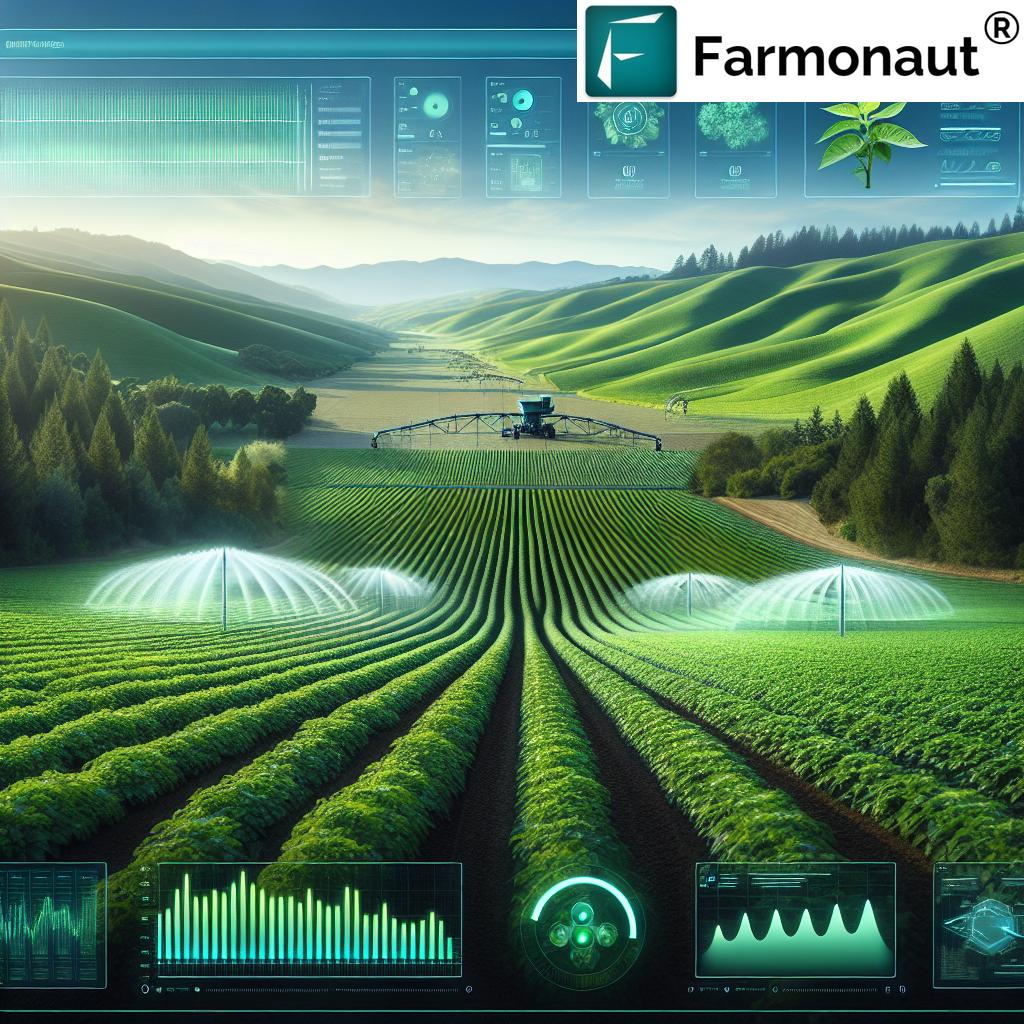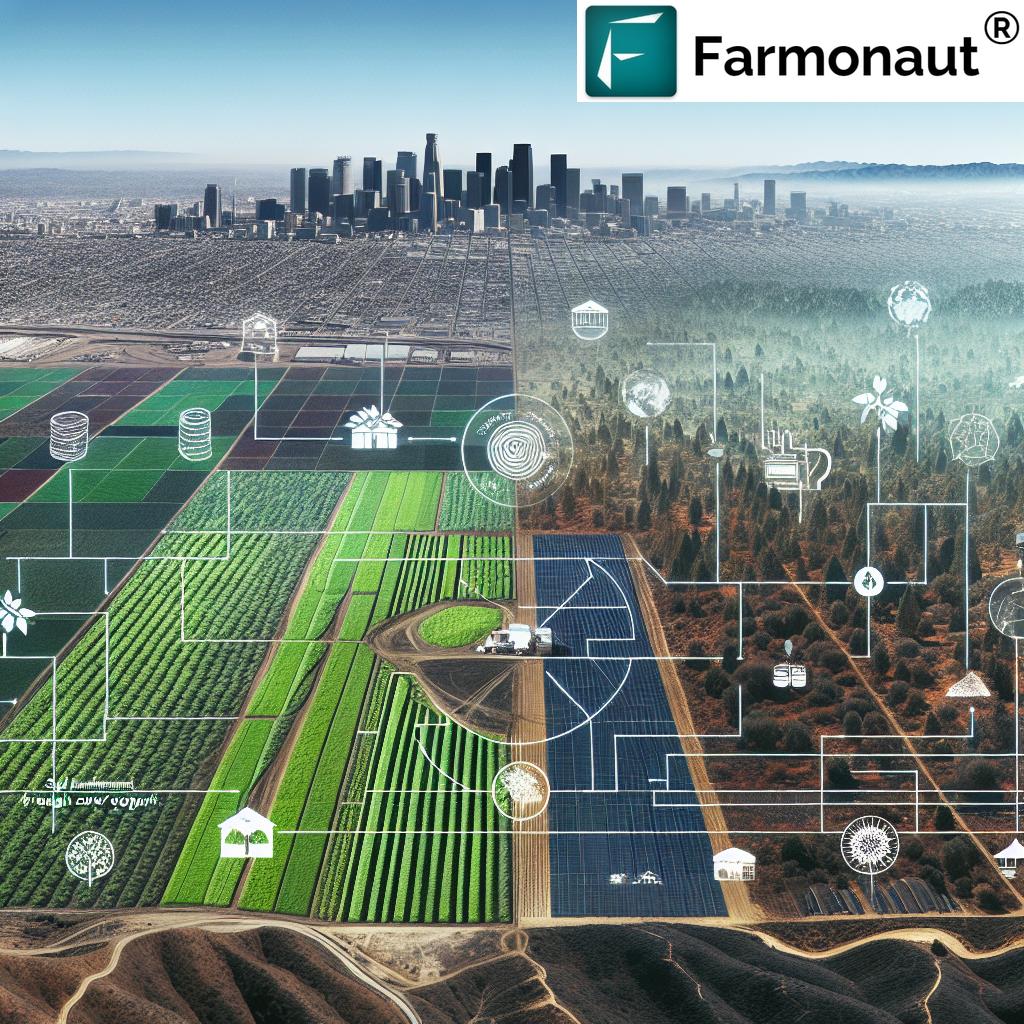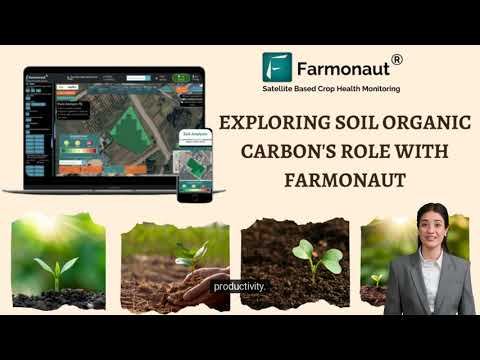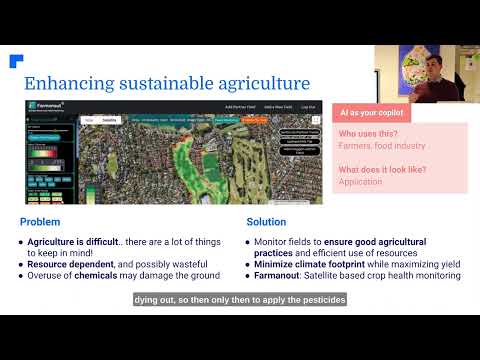Revolutionizing California Agriculture: How Sustainable Practices and AI Technology Are Reshaping Farmlands After Wildfires
“California’s reforestation project aims to plant 100,000 trees in the Los Angeles area, restoring habitats and improving soil health.”
As we delve into the transformative landscape of California’s agriculture, we find ourselves at the forefront of a revolution. The Golden State, long known for its bountiful harvests and diverse crops, is now embracing a new era of sustainable agriculture in California. In the wake of devastating wildfires that have scarred our beloved farmlands, we’re witnessing an inspiring resurgence driven by cutting-edge technology and environmentally conscious practices.
Our journey through this blog post will explore how sustainable practices and AI technology are reshaping California’s agricultural sector, particularly in the aftermath of wildfires. We’ll uncover the innovative approaches being implemented to restore our environment, empower our farmers, and secure a resilient future for our food supply chain.
The Dawn of a New Agricultural Era
California’s agricultural landscape is undergoing a profound transformation. The convergence of environmental challenges, technological advancements, and a growing commitment to sustainability has catalyzed a shift in how we approach farming. This shift is not just about adapting to change; it’s about pioneering a new path forward for agriculture in the United States and beyond.
At the heart of this transformation is the Sustainable California initiative, a comprehensive program launched in March 2023. This initiative embodies a holistic approach to addressing both immediate environmental needs and long-term sustainability goals for California farmers. It’s a testament to our state’s resilience and innovative spirit, showcasing our ability to turn challenges into opportunities for growth and improvement.

Environmental Restoration After Wildfires: A Crucial Step
The recent wildfires that devastated over 40,000 acres in the Los Angeles area have left deep scars on our landscape. However, these challenges have ignited a powerful response from our agricultural community and environmental stewards. The focus on environmental restoration after wildfires has become a cornerstone of our sustainable agriculture efforts.
- Reforestation Projects: A cornerstone of the restoration efforts is the ambitious goal to plant 100,000 trees in the Los Angeles area. This initiative goes beyond mere numbers; it’s about restoring habitats, enhancing soil health, and improving water retention.
- Soil Rehabilitation: Wildfires often leave soil depleted and vulnerable. Our efforts include implementing advanced soil and water conservation techniques to rejuvenate the earth and prepare it for sustainable farming practices.
- Ecosystem Resilience: By focusing on reforestation and habitat restoration, we’re not just replanting trees; we’re rebuilding entire ecosystems that support biodiversity and contribute to the overall health of our agricultural lands.
These reforestation projects are pivotal in mitigating the environmental impacts of wildfires and lay the groundwork for a more resilient agricultural future.
Embracing Agricultural Technology Solutions
As we work to heal our land, we’re also revolutionizing how we farm. The integration of agricultural technology solutions is transforming California’s farming practices, making them more efficient, sustainable, and productive than ever before.
“Farmonaut’s satellite-based crop health monitoring system supports precision farming, enhancing sustainable agriculture practices in California.”
One of the most exciting developments in this space is the adoption of AI-driven digital farming platforms. These platforms are changing the game for California farmers, offering unprecedented insights and control over their operations. Here’s how technology is reshaping our farmlands:
- Precision Agriculture: Advanced satellite imagery and AI algorithms are enabling farmers to monitor crop health with pinpoint accuracy. This level of precision allows for targeted interventions, reducing resource waste and maximizing yields.
- Smart Irrigation Systems: In a state where water is precious, AI-powered irrigation systems are optimizing water usage, ensuring crops receive exactly what they need, when they need it.
- Predictive Analytics: By leveraging big data and machine learning, farmers can now predict pest outbreaks, weather patterns, and optimal harvest times with remarkable accuracy.
These technological advancements are not just improving efficiency; they’re fundamentally changing how we approach farming in California. By providing farmers with real-time data and actionable insights, we’re empowering them to make informed decisions that benefit both their operations and the environment.
The Rise of Organic Farming Practices
Alongside technological advancements, there’s been a significant shift towards organic farming practices in California. This movement is not just about meeting consumer demand for organic products; it’s about building a more sustainable and resilient agricultural ecosystem.
Key aspects of the organic farming revolution include:
- Natural Pest Control: Farmers are increasingly turning to biological pest control methods, reducing reliance on harmful chemicals and fostering a more balanced ecosystem on their farms.
- Crop Rotation and Diversification: These practices help maintain soil health, reduce pest pressures, and create more resilient farming systems.
- Composting and Natural Fertilizers: By leveraging organic matter and natural fertilizers, farmers are improving soil structure and fertility without relying on synthetic inputs.
The adoption of organic farming practices is not just beneficial for the environment; it’s also opening up new market opportunities for California farmers. As consumer demand for organic produce continues to grow, our farmers are well-positioned to meet this need while contributing to a healthier ecosystem.
Building a Sustainable Food Supply Chain
The transformation of California’s agriculture extends beyond the farm gate. We’re witnessing the emergence of a more sustainable food supply chain that connects farmers, distributors, and consumers in new and innovative ways.
- Direct-to-Consumer Models: Digital platforms are enabling farmers to connect directly with consumers, reducing intermediaries and ensuring fresher produce reaches dinner tables.
- Traceability Solutions: Blockchain technology is being leveraged to create transparent supply chains, allowing consumers to trace their food from farm to fork.
- Waste Reduction: AI-driven inventory management systems are helping reduce food waste throughout the supply chain, ensuring more of what’s grown reaches consumers.
These innovations in the food supply chain are not only making our food system more efficient but also more responsive to consumer needs and environmental concerns.

The Role of AI in Agriculture
Artificial Intelligence (AI) is playing an increasingly central role in shaping the future of California’s agriculture. From predictive analytics to autonomous farming equipment, AI is revolutionizing every aspect of farming operations.
- Crop Monitoring: AI-powered image recognition systems can detect early signs of crop stress, disease, or pest infestations, allowing for timely interventions.
- Yield Prediction: Machine learning algorithms can analyze historical data, weather patterns, and current crop conditions to predict yields with unprecedented accuracy.
- Automated Farming Equipment: Self-driving tractors and AI-controlled harvesting machines are increasing efficiency and reducing labor costs.
The integration of AI in agriculture is not just about efficiency; it’s about creating smarter, more responsive farming systems that can adapt to changing environmental conditions and market demands.
Soil and Water Conservation Techniques
In the face of climate change and recurring droughts, soil and water conservation have become critical priorities for California’s agricultural sector. Innovative techniques are being employed to preserve these precious resources:
- Precision Irrigation: Using soil moisture sensors and weather data, farmers can apply water with pinpoint accuracy, reducing waste and improving crop health.
- Cover Cropping: This practice helps prevent soil erosion, improves soil structure, and increases water retention capacity.
- No-Till Farming: By minimizing soil disturbance, farmers can preserve soil structure, reduce erosion, and increase organic matter content.
These conservation techniques are not just preserving resources; they’re building the foundation for a more sustainable and resilient agricultural future in California.
Enhancing Agricultural Ecosystem Resilience
Building resilience into our agricultural ecosystems is crucial for long-term sustainability. This involves creating farming systems that can withstand environmental stresses and recover quickly from disturbances. Key strategies include:
- Biodiversity Enhancement: Encouraging diverse plant and animal species on farms creates more stable and productive ecosystems.
- Agroforestry: Integrating trees and shrubs into crop and animal farming systems provides multiple environmental and economic benefits.
- Climate-Smart Agriculture: Adopting practices that reduce greenhouse gas emissions while increasing productivity and resilience to climate change impacts.
By focusing on ecosystem resilience, we’re not just preparing for future challenges; we’re creating more robust and productive agricultural systems today.
The Impact of Digital Farming Platforms
Digital farming platforms are revolutionizing how farmers manage their operations. These platforms integrate various technologies to provide comprehensive farm management solutions:
- Data Integration: Combining data from multiple sources (satellite imagery, weather stations, soil sensors) to provide a holistic view of farm conditions.
- Decision Support Systems: AI-powered recommendations help farmers make informed decisions about planting, fertilization, and pest control.
- Market Intelligence: Real-time market data and predictive analytics help farmers optimize their crop selection and timing to maximize profitability.
These digital platforms are not just tools; they’re transforming farming into a data-driven, precision-oriented industry.
Comparison: Traditional vs. Sustainable Agricultural Practices in California
| Agricultural Aspect | Traditional Method | Sustainable Practice | Environmental Impact | AI/Technology Integration |
|---|---|---|---|---|
| Soil Health Management | Heavy tilling, synthetic fertilizers | No-till farming, cover crops, organic fertilizers | Improved soil structure, increased carbon sequestration | AI-powered soil analysis, precision fertilizer application |
| Irrigation Techniques | Flood irrigation, fixed schedules | Drip irrigation, weather-based scheduling | Reduced water waste, improved water efficiency | IoT sensors, AI-driven irrigation scheduling |
| Crop Protection | Broad-spectrum pesticides | Integrated Pest Management (IPM), biological controls | Reduced chemical runoff, increased biodiversity | AI pest detection, precision pesticide application |
| Resource Monitoring | Manual observation, periodic sampling | Continuous monitoring, real-time data analysis | Early detection of issues, optimized resource use | Satellite imagery, drone surveillance, IoT sensors |
| Yield Optimization | Historical data, farmer intuition | Data-driven decision making, predictive analytics | Increased productivity, reduced resource waste | Machine learning yield prediction, AI-powered crop management |
The Future of California Agriculture
As we look to the future, it’s clear that California’s agriculture is on a transformative path. The integration of sustainable practices and cutting-edge technology is not just addressing current challenges; it’s paving the way for a more resilient, productive, and environmentally friendly agricultural sector.
Key trends shaping the future include:
- Vertical Farming: Urban agriculture solutions that maximize space and minimize resource use.
- Gene Editing: Responsible use of CRISPR and other gene-editing technologies to develop more resilient and nutritious crops.
- Blockchain in Agriculture: Enhancing traceability and transparency throughout the supply chain.
- Robotics and Automation: Addressing labor shortages and increasing efficiency in planting, maintenance, and harvesting.
These advancements promise to make California’s agriculture not only more sustainable but also more competitive on the global stage.
Empowering Farmers Through Technology
At the heart of California’s agricultural transformation are the farmers themselves. Empowering these stewards of the land with the right tools and knowledge is crucial for the success of sustainable agriculture initiatives.
- Training and Education: Programs to help farmers adopt new technologies and sustainable practices.
- Access to Technology: Initiatives to ensure farmers of all scales can benefit from advanced agricultural technologies.
- Community Support: Building networks and platforms for farmers to share knowledge and experiences.
By investing in our farmers, we’re not just improving individual operations; we’re building a more resilient and innovative agricultural community.
The Role of Farmonaut in California’s Agricultural Future
In the context of California’s evolving agricultural landscape, Farmonaut’s satellite-based farm management solutions offer valuable support to the state’s sustainability efforts. By providing real-time crop health monitoring and AI-driven insights, Farmonaut can help California farmers make more informed decisions about resource management and crop care.
Farmonaut’s technologies align well with California’s push towards precision agriculture and sustainable farming practices. The platform’s ability to offer detailed vegetation health indices (NDVI) and soil moisture data can be particularly beneficial in areas recovering from wildfires, helping farmers assess and manage their land more effectively.
While Farmonaut is not directly involved in California’s specific initiatives, its tools and technologies represent the kind of innovative solutions that are reshaping agriculture in the state and beyond. Farmers interested in leveraging satellite technology for their operations can explore Farmonaut’s offerings:
For those interested in integrating Farmonaut’s satellite data into their own systems, the company offers API access:
Conclusion: A Sustainable Future for California Agriculture
As we conclude our exploration of California’s agricultural transformation, it’s clear that we’re witnessing a pivotal moment in the history of farming. The convergence of sustainable practices, cutting-edge technology, and a renewed commitment to environmental stewardship is reshaping our farmlands and food systems in profound ways.
From the ambitious reforestation projects healing our fire-scarred landscapes to the AI-driven platforms revolutionizing farm management, California is leading the way in sustainable agriculture. These efforts are not just about recovery; they’re about building a more resilient, productive, and environmentally friendly agricultural sector that can serve as a model for the rest of the world.
As we move forward, the continued collaboration between farmers, technologists, environmentalists, and policymakers will be crucial in realizing the full potential of these initiatives. By embracing innovation, prioritizing sustainability, and supporting our farming communities, we can ensure that California’s agriculture not only recovers from recent challenges but thrives in the face of future ones.
The journey towards a fully sustainable agricultural sector is ongoing, but the steps we’re taking today are laying the foundation for a brighter, greener future for California’s farmlands and the communities they support.
FAQs
- Q: How are wildfires impacting California’s agriculture?
A: Wildfires have devastated large areas of farmland, affecting soil health and water retention. However, they’ve also spurred innovative restoration efforts and sustainable farming practices. - Q: What role does AI play in sustainable agriculture?
A: AI is crucial in precision farming, offering insights for efficient resource use, predicting crop yields, detecting pests and diseases early, and optimizing irrigation. - Q: How are farmers adapting to climate change in California?
A: Farmers are adopting climate-smart agriculture techniques, including drought-resistant crops, water-efficient irrigation systems, and soil conservation practices. - Q: What are the benefits of organic farming practices in California?
A: Organic farming improves soil health, reduces chemical runoff, promotes biodiversity, and meets growing consumer demand for organic produce. - Q: How is technology improving the food supply chain in California?
A: Technology is enhancing traceability, reducing waste through better inventory management, and connecting farmers directly with consumers through digital platforms.
Farmonaut Subscriptions
Earn With Farmonaut
Earn 20% recurring commission with Farmonaut’s affiliate program by sharing your promo code and helping farmers save 10%. Onboard 10 Elite farmers monthly to earn a minimum of $148,000 annually—start now and grow your income!







